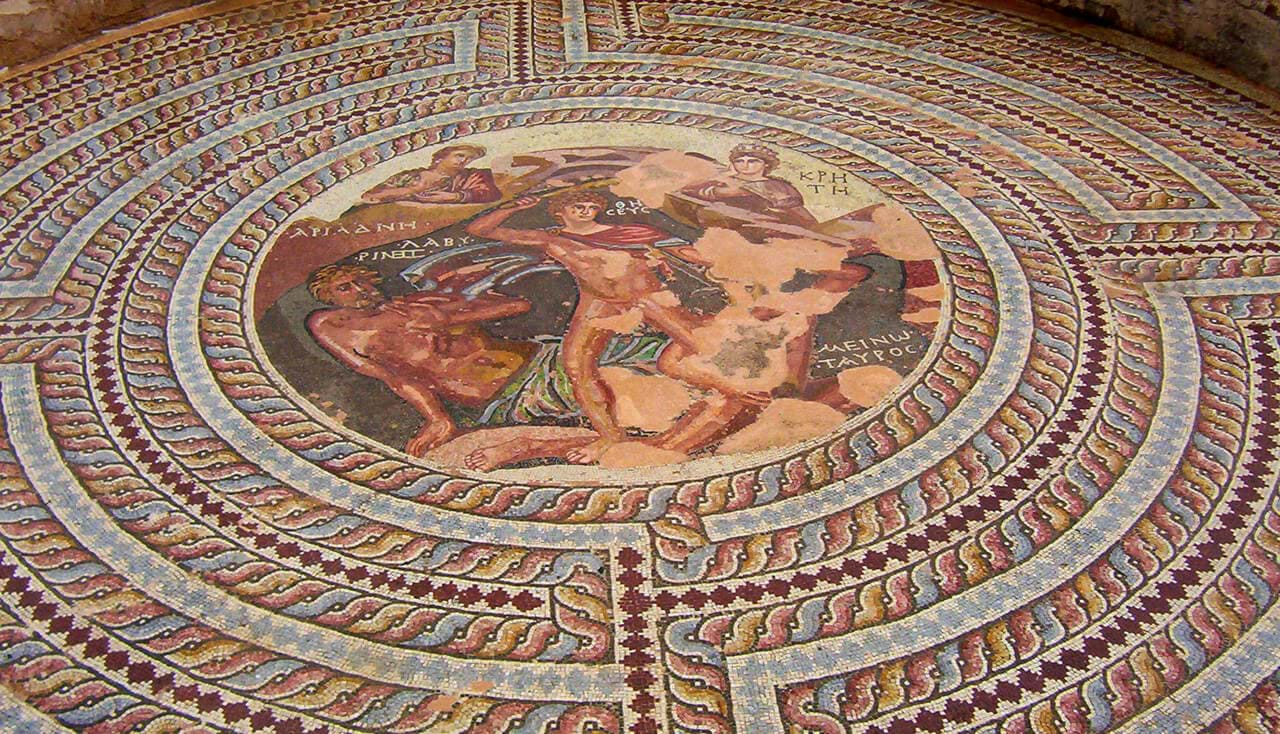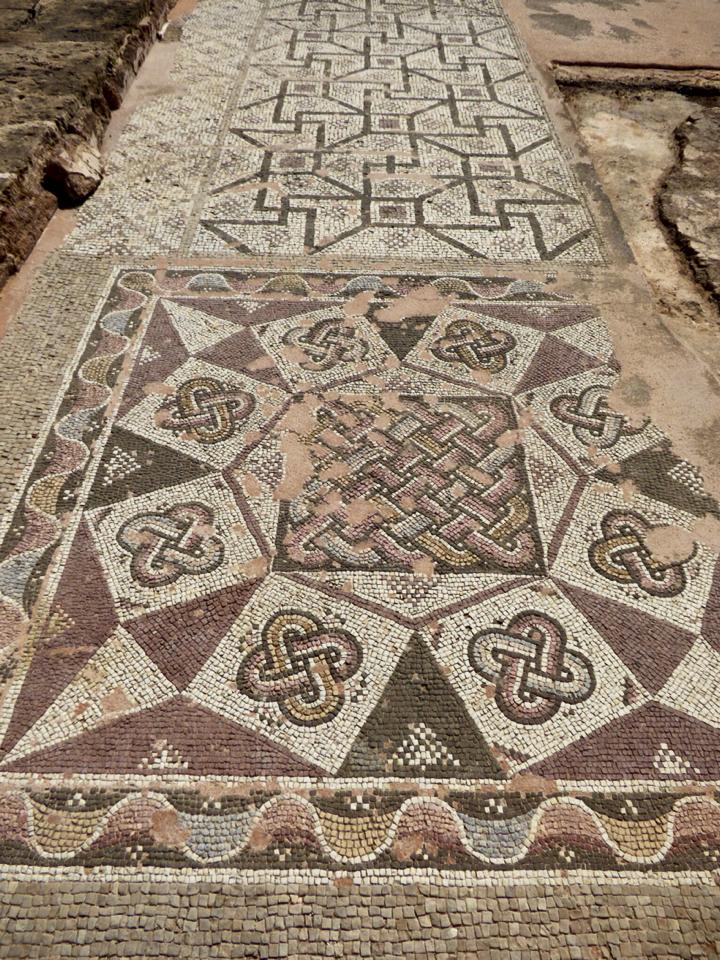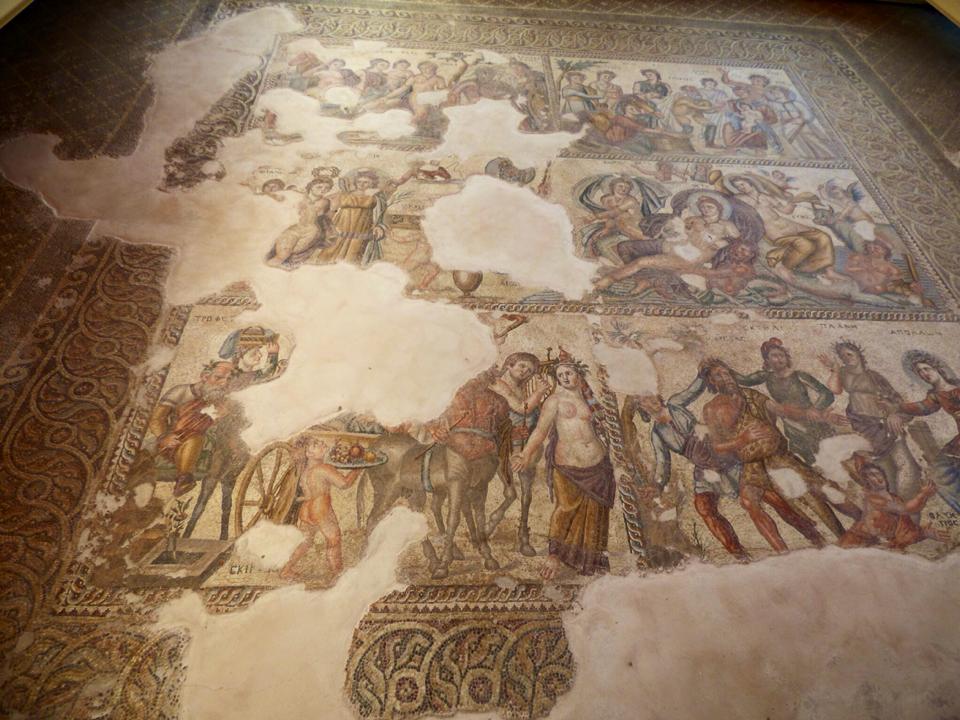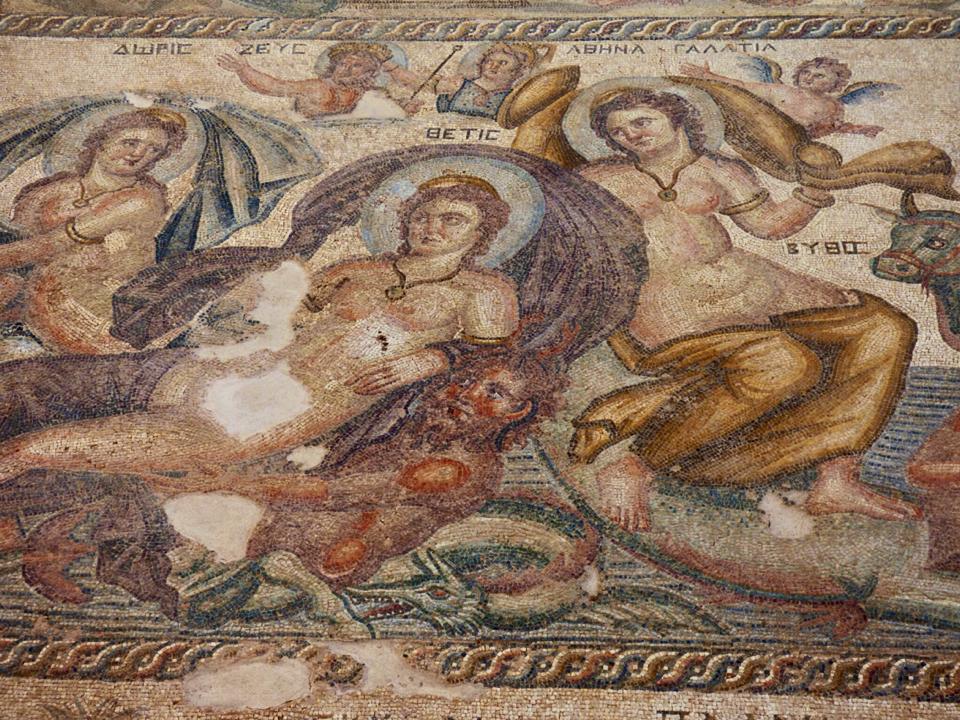The Pafos Mosaics, located in Pafos, Cyprus, are celebrated for their breathtaking beauty and artistic intricacy, widely regarded as some of the finest mosaics in the eastern Mediterranean. These stunning floor decorations, dating back to the Roman period, not only reflect the wealth and taste of the Roman elites but also serve as a window into the cultural and artistic achievements of the ancient city. Their discovery and significance have made them an enduring symbol of the island’s rich historical legacy.
Discovery of the Pafos Mosaics
In 1962, a farmer in Pafos made a remarkable accidental discovery: a series of ancient mosaics buried beneath his land. Archaeologists soon determined that these mosaics adorned the lavish villas of Roman officials and wealthy citizens from the 2nd to the 5th century CE. This chance finding unveiled one of the most significant archaeological treasures of the region, providing invaluable insight into the affluence and artistry of Roman Cyprus.

Artistic Significance and Craftsmanship
The Pafos Mosaics are renowned for their exceptional craftsmanship, representing some of the finest examples of mosaic art from antiquity. Each piece tells a story, often rooted in mythology, with intricate designs that convey both artistic skill and cultural depth.
Mythological Scenes
The mosaics feature a wealth of mythological narratives, bringing to life the stories of gods, heroes, and lovers from ancient Greece and Rome. Key scenes include the tale of the wine god Dionysus, the heroic feats of Theseus, and the tragic love story of Pyramus and Thisbe. These elaborate depictions reveal the cultural importance of mythology in Roman society and reflect the educated taste of their owners.

Geometric and Natural Motifs
Beyond mythological figures, the mosaics also showcase geometric patterns and natural motifs such as flowers, animals, and birds. These intricate designs highlight the high level of technical skill required to assemble thousands of tiny colored stones into vibrant, lifelike compositions. The colors used—reds, blues, yellows, and greens—remain remarkably vivid, a testament to the craftsmanship of ancient mosaic makers.

The Key Villas: Houses of Dionysus, Theseus, and Aion
The most notable mosaics are found in three main villas within the Archaeological Park of Pafos: the House of Dionysus, the House of Theseus, and the House of Aion. These houses were named after the mythological figures featured in their floor designs, and each offers a unique glimpse into Roman life.
- House of Dionysus: This villa boasts 556 square meters of mosaic floors, primarily dedicated to scenes involving the god Dionysus. The sheer size and detail of these mosaics indicate the high status of the villa’s owner.
- House of Theseus: Named for its detailed depiction of the hero Theseus, this house includes intricate representations of his battle with the Minotaur, showcasing the importance of Greek mythology in Roman culture.
- House of Aion: Less known but equally remarkable, the House of Aion contains mosaics that display allegorical and philosophical themes, reflecting the intellectual and cultural sophistication of the time.

UNESCO World Heritage Recognition
Today, the Pafos Mosaics are a key part of the UNESCO World Heritage-listed Archaeological Park of Pafos, a designation that highlights their international importance. This status not only protects these ancient treasures but also brings global attention to the cultural and historical wealth of Cyprus.

The mosaics play a crucial role in our understanding of Roman life on the island, showing the intersection of art, culture, and daily living. The fact that these mosaics have survived for centuries in such excellent condition only adds to their significance, serving as a powerful reminder of the technological and artistic achievements of the ancient world.
Global Impact and Preservation
The mosaics have had a lasting impact, with replicas and exhibitions showcased in museums worldwide. Their influence extends beyond archaeology; they have inspired modern artists and continue to attract tourists and scholars alike. Preservation efforts have been crucial in maintaining these mosaics, ensuring that they remain intact for future generations to admire and study.

The global recognition of the Pafos Mosaics reflects the importance of preserving cultural heritage. Their intricate designs and mythological narratives are a window into ancient history, revealing not only the artistry of the time but also the social and intellectual life of Roman Pafos.
Conclusion
The Pafos Mosaics are more than just decorative pieces; they are a testament to the artistic and cultural achievements of Roman Cyprus. Their exceptional craftsmanship, mythological richness, and vivid storytelling continue to captivate visitors and scholars alike. As a UNESCO World Heritage site, they represent an enduring legacy, ensuring that the ancient splendor of Pafos will be remembered for generations to come. These masterpieces remind us of the incredible capacity for beauty and sophistication in the ancient world, challenging us to appreciate the intricacies of the past in a modern context.

